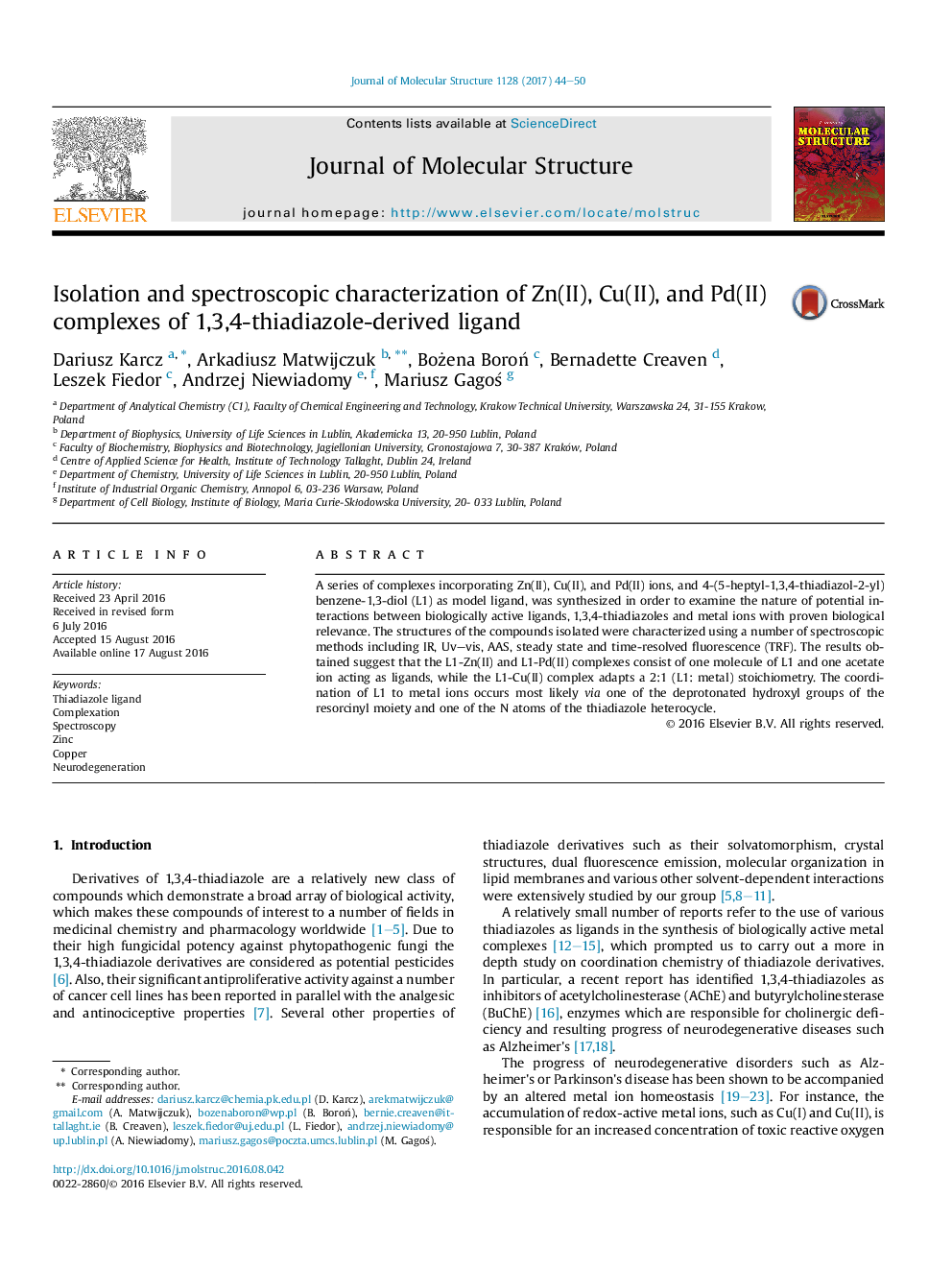| Article ID | Journal | Published Year | Pages | File Type |
|---|---|---|---|---|
| 1408667 | Journal of Molecular Structure | 2017 | 7 Pages |
•Complexation of 1,3,4-thiadiazole derivative with Zn(II), Cu(II) and Pd(II) ions.•Structural elucidation of complexes with use of various spectroscopic techniques.•Zn(II) and Pd(II) complexes adopt a 1:1 (thiadiazole ligand: metal) stoichiometry.•Cu(II) complex adopts a 2:1 (thiadiazole ligand: metal) stoichiometry.
A series of complexes incorporating Zn(II), Cu(II), and Pd(II) ions, and 4-(5-heptyl-1,3,4-thiadiazol-2-yl)benzene-1,3-diol (L1) as model ligand, was synthesized in order to examine the nature of potential interactions between biologically active ligands, 1,3,4-thiadiazoles and metal ions with proven biological relevance. The structures of the compounds isolated were characterized using a number of spectroscopic methods including IR, Uv–vis, AAS, steady state and time-resolved fluorescence (TRF). The results obtained suggest that the L1-Zn(II) and L1-Pd(II) complexes consist of one molecule of L1 and one acetate ion acting as ligands, while the L1-Cu(II) complex adapts a 2:1 (L1: metal) stoichiometry. The coordination of L1 to metal ions occurs most likely via one of the deprotonated hydroxyl groups of the resorcinyl moiety and one of the N atoms of the thiadiazole heterocycle.
Graphical abstractFigure optionsDownload full-size imageDownload as PowerPoint slide
